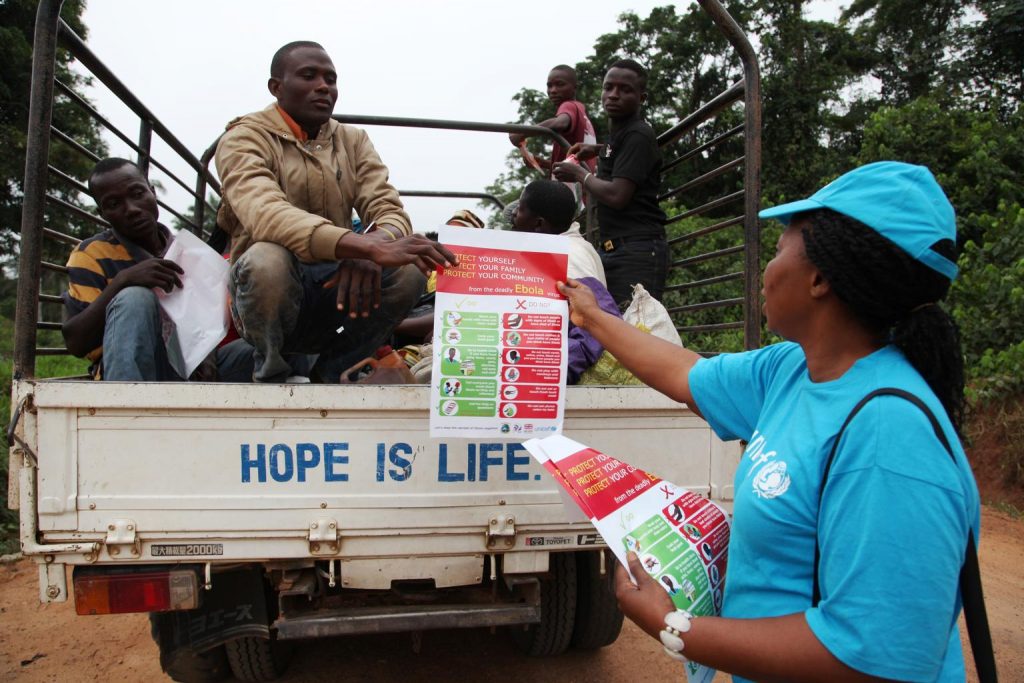Uganda has reported five (5) Ebola virus disease outbreaks and three (3) Marburg virus disease outbreaks from 2000 to 2016. Peoples’ knowledge and attitude towards Ebola and Marburg virus disease impact on control and prevention measures especially during outbreaks. We describe knowledge and attitude towards Ebola and Marburg virus outbreaks in two affected communities in Uganda to inform future outbreak responses and help in the design of health education and communication messages. Methods The study was a community survey done in Luweero, Ibanda and Kamwenge districts that have experienced outbreaks of Ebola and Marburg virus diseases. Quantitative data were collected using a structured questionnaire and triangulated with qualitative participatory epidemiology techniques to gain a communities’ knowledge and attitude towards Ebola and Marburg virus disease. Results Out of 740 respondents, 48.5% (359/740) were categorized as being knowledgeable about Ebola and Marburg virus diseases, whereas 60.5% (448/740) were having a positive attitude towards control and prevention of Ebola and Marburg virus diseases.
The mean knowledge and attitude percentage scores were 54.3 (SD = 23.5, 95% CI = 52.6-56.0) and 69.9 (SD = 16.9, 95% CI = 68.9-71.1) respectively. People educated beyond primary school were more likely to be knowledgeable about Ebola and Marburg virus disease than those who did not attain any formal education (OR = 3.6, 95% CI = 2.1-6.1). Qualitative data revealed that communities describe Ebola and Marburg virus diseases as very severe diseases with no cure and they believe the diseases spread so fast. Respondents reported fear and stigma suffered by survivors, their families and the broader community due to these diseases. Conclusion Communities in Uganda affected by filovirus outbreaks have moderate knowledge about these diseases and have a positive attitude towards practices to prevent and control Ebola and Marburg viral diseases. The public health sector should enhance this community knowledge gap to empower them more by supplying educational materials for epidemic preparedness in future using appropriate communication channels as proposed by the communities.



